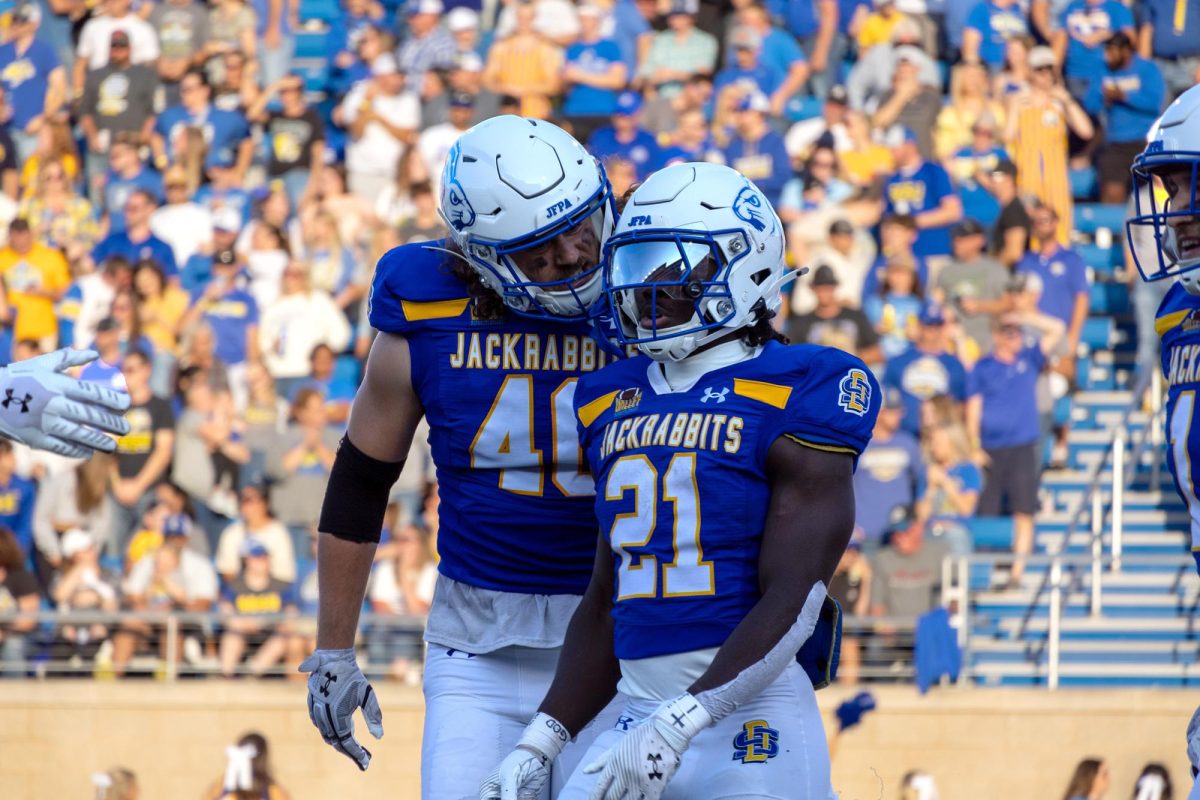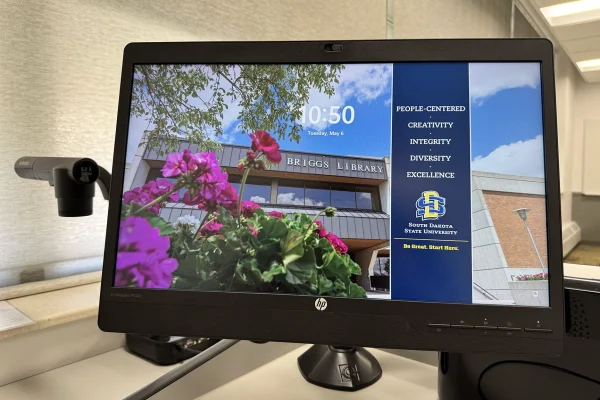Keeping up with the Bummobile
October 19, 2016
Driven, pushed or pulled, the Bummobile has been part of every Hobo Day Parade since 1939.
The Bummobile is a 1912 Ford Model T and was donated to the Students’ Association by a Flandreau farmer and SDSU alumnus, Frank Weigel, in 1938.
Weigel’s only condition was that the Bummobile had to be featured in the Hobo Day Parade every year, according to a Collegian from 2013.
The Bummobile has had quite a few repairs throughout the years.
The Union started looking to restore the Bummobile in 2007 and continued in 2008. It turned out to be hard to find mechanics who could restore a Ford Model T, according to Jennifer Novotny, senior director for The Union and former 1985 Hobo Day Committee graduate adviser.
While searching for a mechanic, a select group of representatives, including the grand pooba and the Hobo Day Committee adviser at the time traveled to Kansas City to meet with an agency specializing in restoring Model T’s.
The Bummobile was in need of restoration because it would stall in the middle of parades. As a result, the vehicle had been driven less and less.
“I would say that back then the Bummobile would die in a summer parade route in Yankton, which was a really long route,” Novotny said. “One time we had a small engine fire during the Brookings 4th of July Parade in 1996.”
Breakdowns happened frequently throughout the years and the caretakers would always go back and look to see if they could possibly solve the problem.
The Union would spend about $500 to $600 a year with tune-ups and little repairs. It became expensive due to the fact that finding pieces and parts to a 1912 Ford Model T wasn’t easy.
Completely restoring the Bummobile would take thousands of dollars.
“Anything that is over a 100 years old does take a little bit of babying,” said Edward Bain, maintenance staff and one of the caretakers for the Bummobile.
In 2009, the vehicle was sent to Palo Alto, California and restored by Harold Hohbach, a 1943 SDSU alumnus.
One of the caretakers for the Bummobile and Assistant Director for the University Student Union, Keith Skogstad, remembers the day the Bummobile was shipped off to have a face lift.
“[The Bummobile] made it through the Hobo Day Parade that year and then after that it was then sent to California,” Skogstad said. “We barely got it back before school had started that fall.”
Most of the money that helped pay for the restoration came from the university. The Hobo Day Committee at that time wasn’t funded enough to pay for the restoration, even though they fundraised for it.
The Bummobile only costs around $100 a year to maintain since the 2009 restoration.
The 1912 Ford Model T came back from its restoration with a new look: black fenders, a midnight blue body and gold pinstripes and teardrop wooden-spoked wheels, according to a Collegian article from 2011.
Since the restoration in 2009, one of the hardest parts to keep up on the Ford Model T are the running boards.
“Running boards are meant to help you get in the vehicle … not meant to have six or more people stand at them at the same time,” Skogstad said.
A week before Hobo Week the caretakers of the Bummobile, Ed Bain and Greg Markus, give the Bummobile an extensive workup to make sure that everything is running properly.
The first thing the caretakers do is start it up, and by hearing how it sounds, they can usually figure out if anything is wrong with it.
General maintenance done by the caretakers is changing the oil, antifreeze, making sure that the battery is charged and that there is air in the tires.
Bain drives the Bummobile through every Hobo Day Parade, but for the summer the Hobo Day Committee will drive the vehicle through parades throughout South Dakota.
Before the Hobo Day Committee is allowed to drive the Bummobile they have to go through training and practice driving so they are comfortable with all of the pedals and levers.
Assistant Pooba for the Parade and SA Senator Scott Simons said his favorite part of the Bummobile is how to start the vehicle.
“It is not your usual automobile. The Bummobile has three pedals and the ignition process is a combination of switches and levers,” Simons said. “There are only a few individuals who are allowed to drive the Bummobile and it is an honor to drive such a historic vehicle.”





















